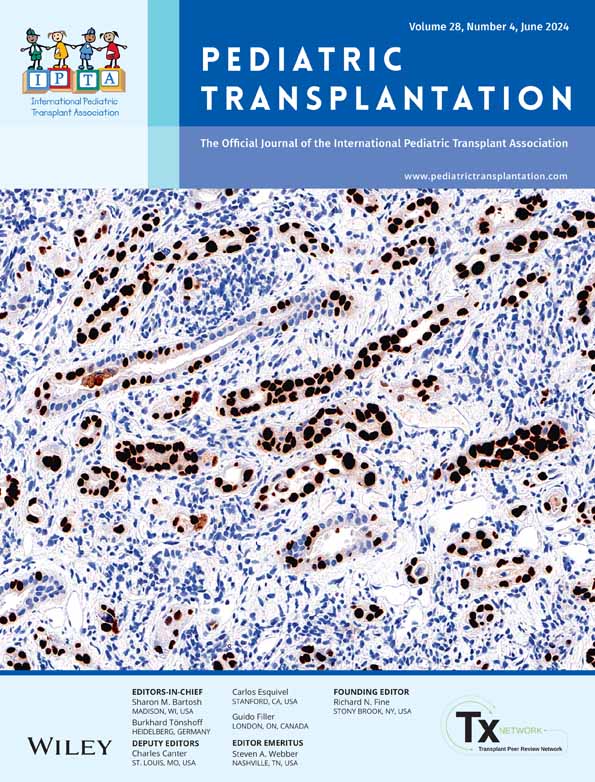Impact of ventricular assist device use on pediatric heart transplant waitlist mortality: Analysis of the scientific registry of transplant recipients database
Abstract
Background
Children awaiting heart transplant (Tx) have a high risk of death due to donor organ scarcity. Historically, ventricular assist devices (VADs) reduced waitlist mortality, prompting increased VAD use. We sought to determine whether the VAD survival benefit persists in the current era.
Methods
Using the Scientific Registry of Transplant Recipients, we identified patients listed for Tx between 3/22/2016 and 9/1/2020. We compared characteristics of VAD and non-VAD groups at Tx listing. Cox proportional hazards models were used to identify risk factors for 1-year waitlist mortality.
Results
Among 5054 patients, 764 (15%) had a VAD at Tx listing. The VAD group was older with more mechanical ventilation and renal impairment. Unadjusted waitlist mortality was similar between groups; the curves crossed ~90 days after listing (p = .55). In multivariable analysis, infant age (HR 2.77, 95%CI 2.13–3.60), Black race (HR 1.57, 95%CI 1.31–1.88), congenital heart disease (HR 1.23, 95%CI 1.04–1.46), renal impairment (HR 2.67, 95%CI 2.19–3.26), inotropes (HR 1.28, 95%CI 1.09–1.52), and mechanical ventilation (HR 2.23, 95%CI 1.84–2.70) were associated with 1-year waitlist mortality. VADs were not associated with mortality in the first 90 waitlist days but were protective for those waiting ≥90 days (HR 0.43, 95%CI 0.26–0.71).
Conclusions
In the current era, VADs reduce waitlist mortality, but only for those waitlisted ≥90 days. The differential effect by race, size, and VAD type is less clear. These findings suggest that Tx listing without VAD may be reasonable if a short waitlist time is anticipated, but VADs may benefit those expected to wait >90 days.
CONFLICT OF INTEREST STATEMENT
The authors have no conflicts of interest to disclose.
Open Research
DATA AVAILABILITY STATEMENT
The data that support the findings of this study are available from the corresponding author upon reasonable request.




